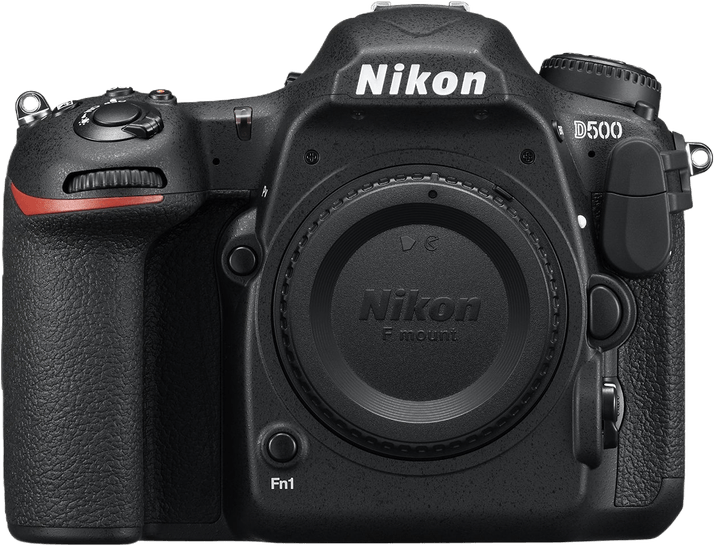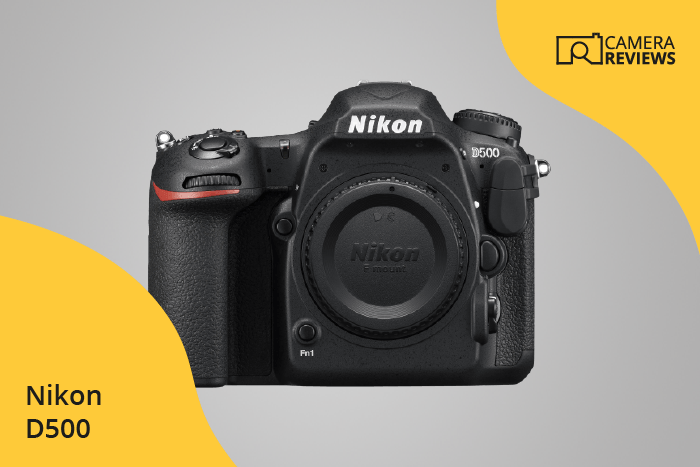Nikon D500 Specs and Scores

The Nikon D500 receives a score of 75/100 in general specifications. Launched in 2016, this DSLR camera boasts dimensions of 147 x 115 x 81mm and a weight of 860g, or 1.90lbs. Priced at $2000 upon its release, the D500 maintains relevance in today’s market due to its solid build and performance.
Despite being a few years old, the Nikon D500’s specifications continue to impress, offering a reliable and high-quality option for photographers seeking a reliable DSLR camera.
Nikon D500 Overview and Optics
The Nikon D500’s optics score is 69/100. With 20.9 megapixels, a shooting speed of 10 frames per second, and a CMOS sensor, this camera offers a solid performance. The Expeed 5 processor ensures fast image processing, while the DXOMARK sensor score of 84 showcases its impressive capabilities.
The APS-C sensor size and Nikon F DX lens mount provide compatibility with a wide range of lenses. However, the absence of image stabilization might be a drawback for some users. The 3:2 aspect ratio, a standard for most DSLRs, ensures well-proportioned images.
When considering the current market, the Nikon D500 offers reliable optics performance. Its specifications cater to various photography needs, making it a strong contender in its category. Despite some limitations, such as the lack of image stabilization, the D500 remains a competitive choice for photographers seeking a dependable camera with versatile optics.
Nikon D500 Video Performance
The Nikon D500 has a video score of 70/100, which reflects its capabilities in this area. The camera offers a maximum video resolution of 4K (3840 x 2160) and can capture footage at a maximum frame rate of 30fps. Additionally, the D500 includes built-in time-lapse functionality.
In the current market, the Nikon D500’s video specifications are competitive, but not top-of-the-line. Many cameras now offer 4K resolution, and some even provide higher frame rates for smoother motion. However, the D500’s 4K resolution and 30fps frame rate are sufficient for most users’ needs, and the time-lapse feature is a valuable addition.
The Nikon D500’s video capabilities are solid, meeting the expectations of many photographers and videographers. Although not the most advanced in the market, the camera’s features, including 4K resolution and time-lapse functionality, make it a reliable choice for capturing high-quality video.
Nikon D500 Features and Benefits
The Nikon D500 boasts an impressive feature score of 87/100. A standout characteristic is the 3.2-inch touchscreen with a substantial resolution of 2,359,000 dots, offering users a clear and responsive interface. Furthermore, the camera comes with a flip screen, enhancing the ease of capturing images and videos from various angles.
In the current market, the D500 remains relevant, particularly due to its connectivity capabilities. The camera incorporates both Wi-Fi and Bluetooth, enabling seamless sharing and remote control of the device. However, the lack of GPS may be a drawback for some users who require geotagging features.
The Nikon D500’s features, such as the touchscreen, flip screen, and connectivity options, contribute to its high score and make it a competitive choice for photography enthusiasts.
Nikon D500 Storage and Battery
The Nikon D500 storage and battery section receives a score of 79/100. This camera boasts two memory card slots, accepting SD, SDHC, SDXC (UHS-II compatible), and XQD cards, offering flexibility in storage options. The battery life of the D500 is impressive, with 1240 shots per charge using the EN-EL15 battery type. However, it lacks USB charging capabilities.
In the current market, the Nikon D500’s storage and battery specifications are strong. The dual memory card slots and extensive battery life give users confidence in capturing and storing their images. While the absence of USB charging may be a minor drawback, the camera remains a reliable choice.
Nikon D500 Alternatives
Do you want to know how the Nikon D500 compares to its competitors? Have a look at the most popular comparisons for this camera below:
- Nikon D500 vs D850
- Nikon D500 vs D7200
- Nikon D500 vs D7500
- Canon EOS 5D Mark IV vs Nikon D500
- Nikon D500 vs Pentax K-3 Mark III
- Nikon D500 vs D750
Nikon D500 FAQ
Does the Nikon D500 Have Built-in Image Stabilization?
The Nikon D500 does not have built-in image stabilization. However, it supports lenses with VR (Vibration Reduction) technology, which compensates for camera shake and ensures sharp images.
Does the Nikon D500 Support 4K Video Recording?
Yes, the Nikon D500 supports 4K UHD video recording at up to 30 frames per second, allowing users to capture high-quality, detailed videos with ease.
What Size Sensor Does The Nikon D500 Have?
The Nikon D500 features an APS-C sized sensor, which is also known as a DX-format sensor. This provides excellent image quality and performance in various shooting conditions.
Does the Nikon D500 Have a Dual Memory Card Slot?
Yes, the Nikon D500 has a dual memory card slot, which accommodates one XQD card and one SD card, allowing for flexible storage options and seamless file management.
Does the Nikon D500 Have a Touch Screen?
Yes, the Nikon D500 features a 3.2-inch tilting touchscreen LCD, which allows for easy navigation, image review, and intuitive control of camera settings.
Does the Nikon D500 Have Wi-Fi and Bluetooth?
Yes, the Nikon D500 is equipped with both Wi-Fi and Bluetooth connectivity, enabling easy sharing of images and remote control of the camera through compatible devices.
Does the Nikon D500 Have GPS?
No, the Nikon D500 does not have built-in GPS functionality. However, users can add geolocation data to their images using optional GPS accessories or compatible smartphone apps.
Is the Nikon D500 Weather Sealed?
Yes, the Nikon D500 is weather sealed, featuring a durable magnesium alloy body and extensive weather sealing against dust, moisture, and harsh conditions, making it suitable for outdoor photography.
Does the Nikon D500 Have a Built-in Flash?
No, the Nikon D500 does not have a built-in flash. Instead, it features a hot shoe for attaching external flashes and other accessories, providing greater lighting flexibility.

